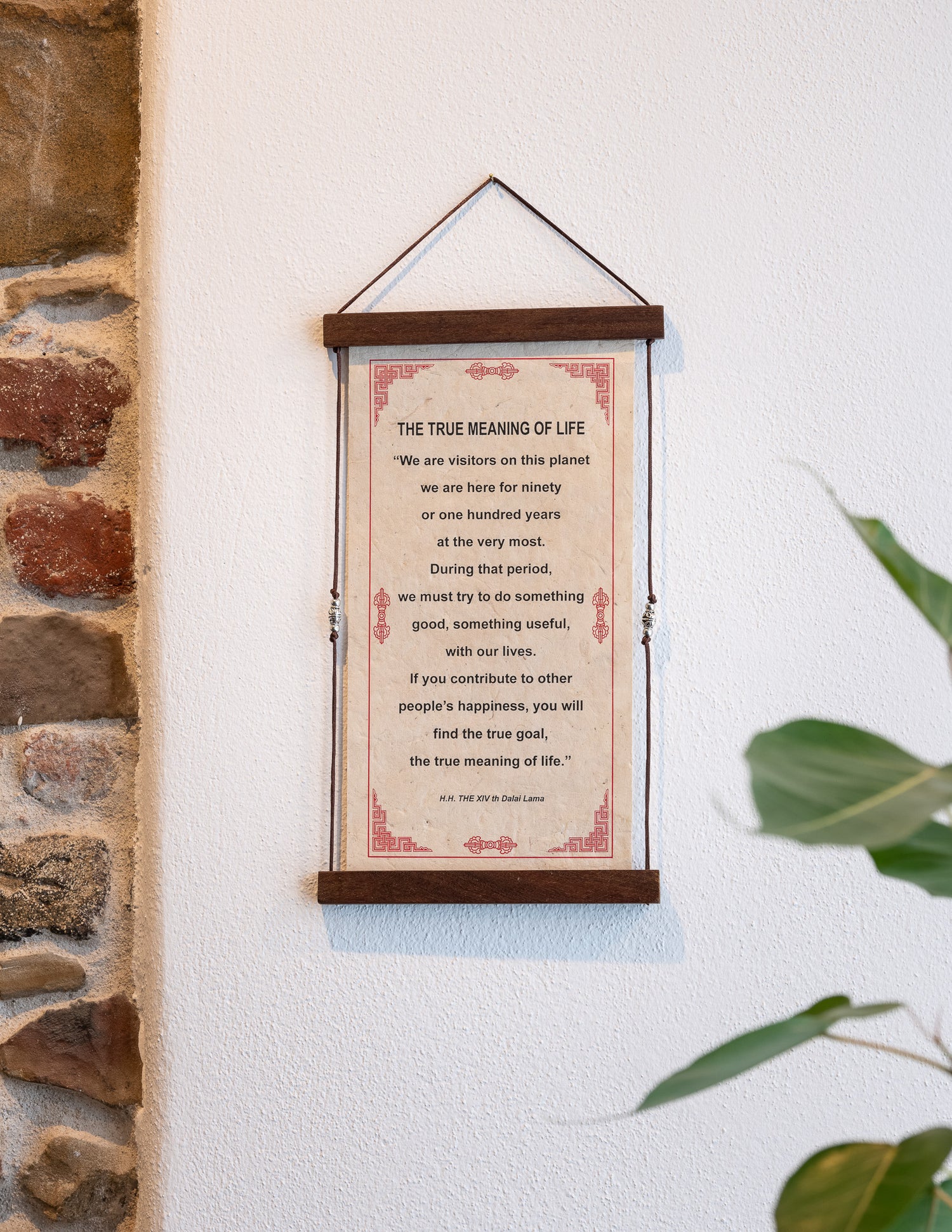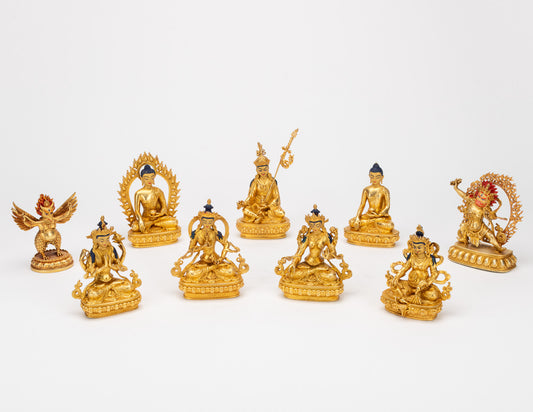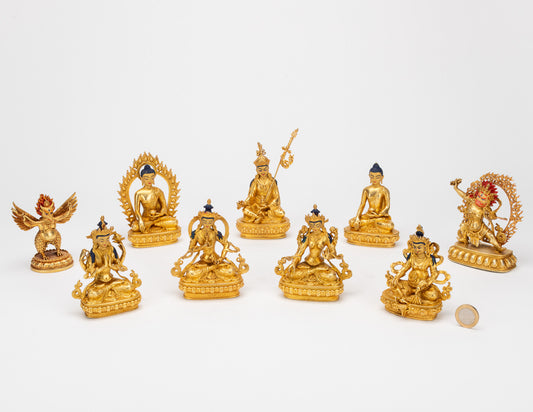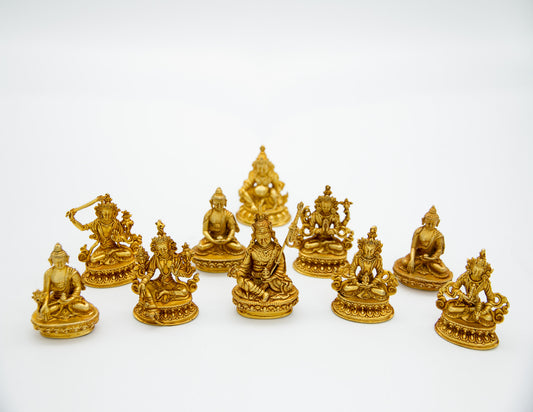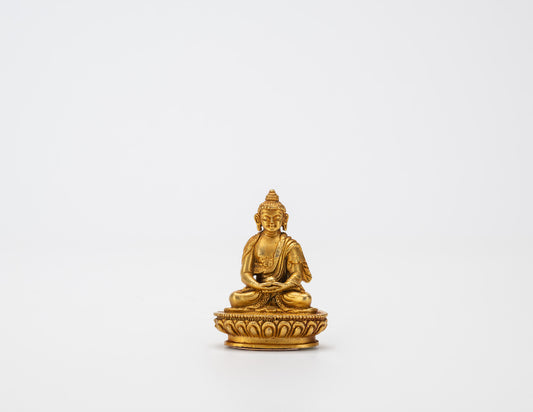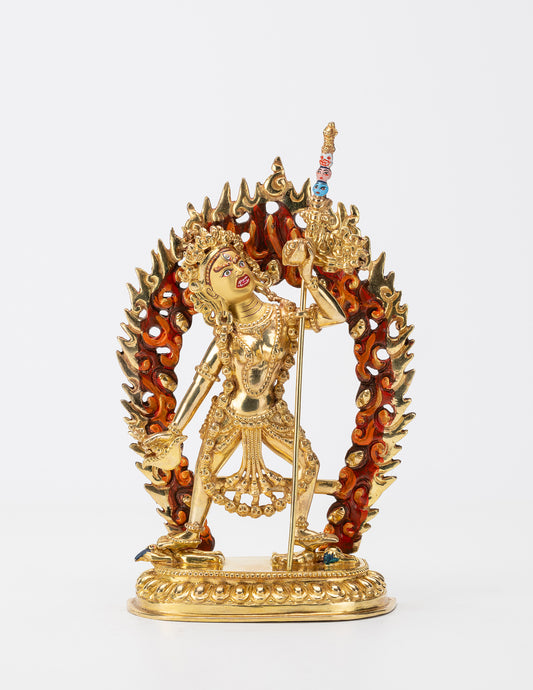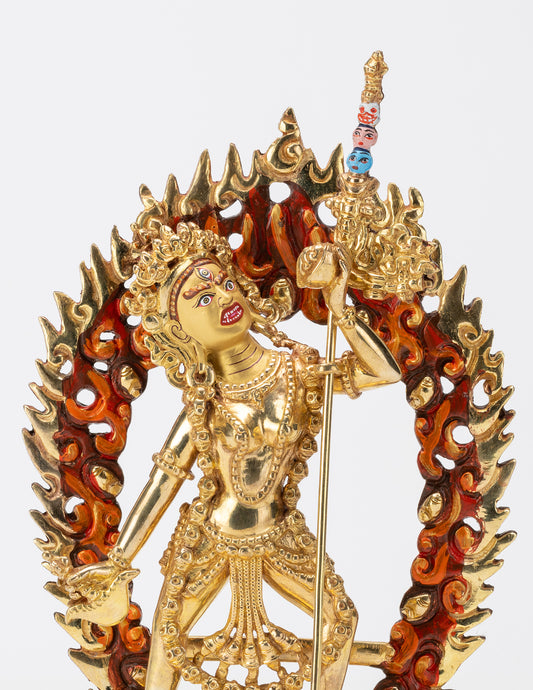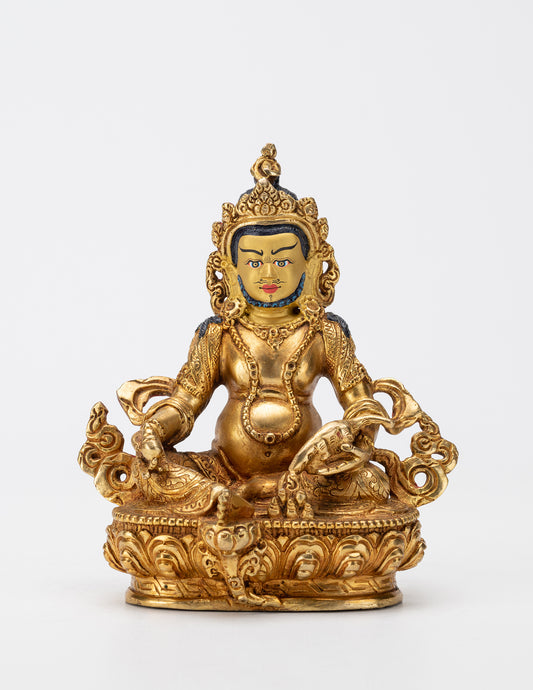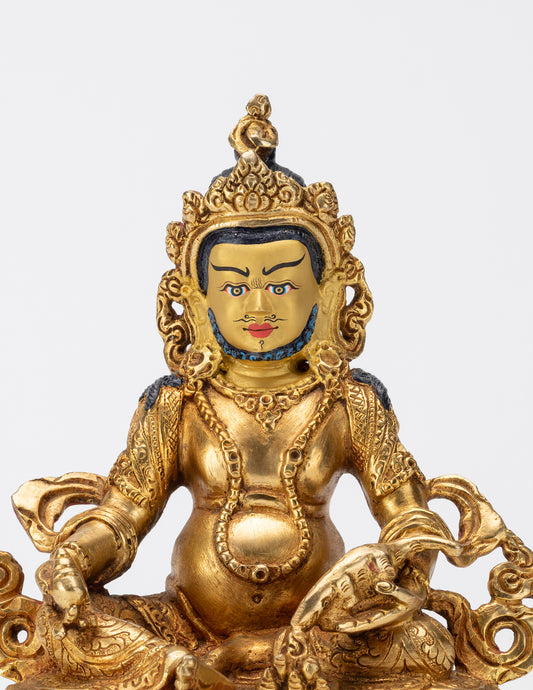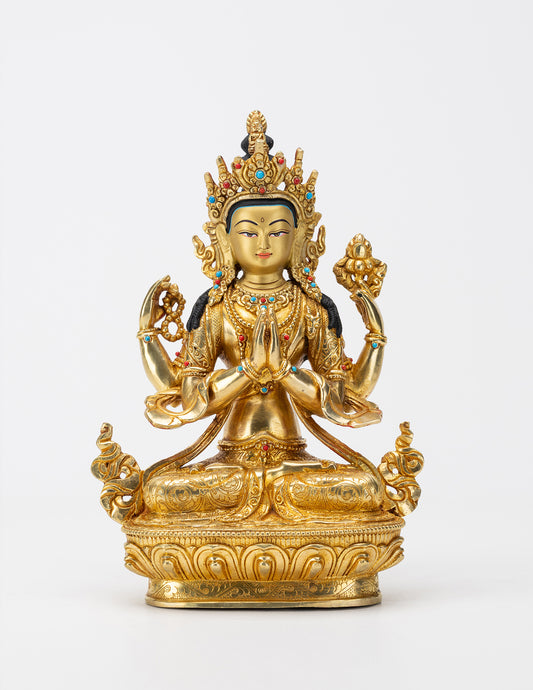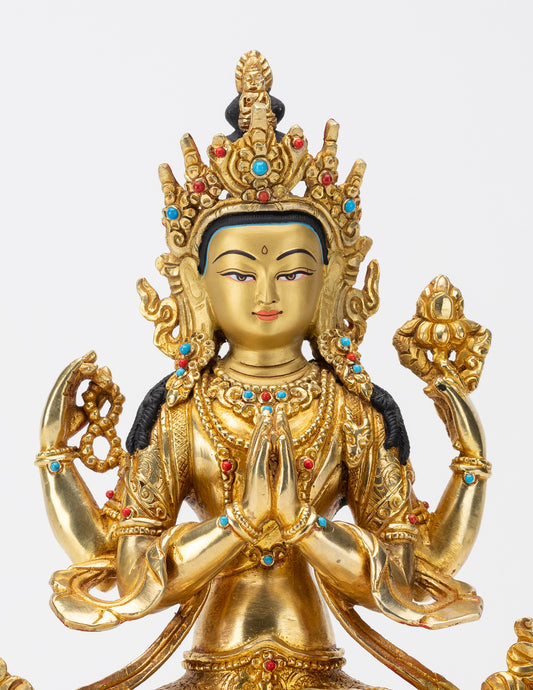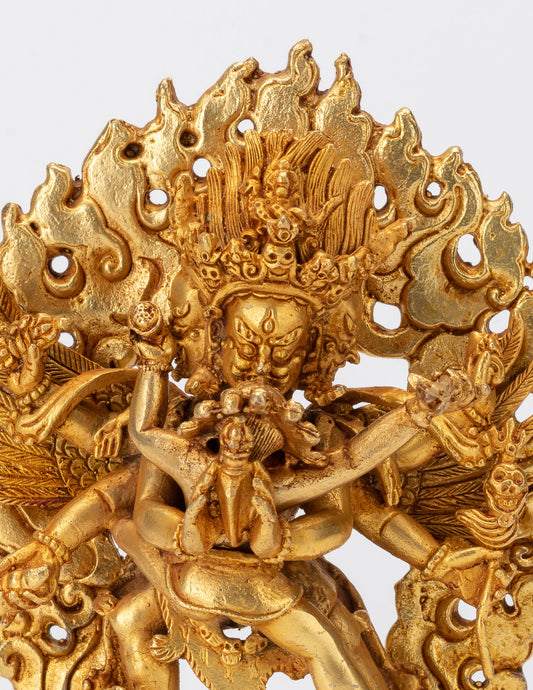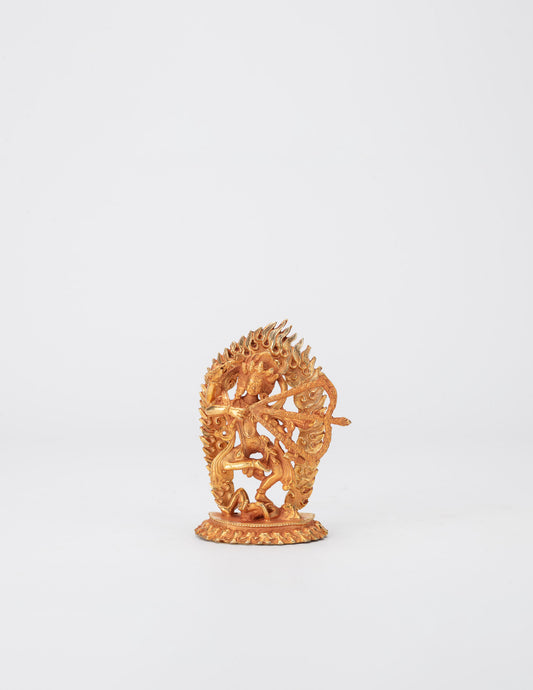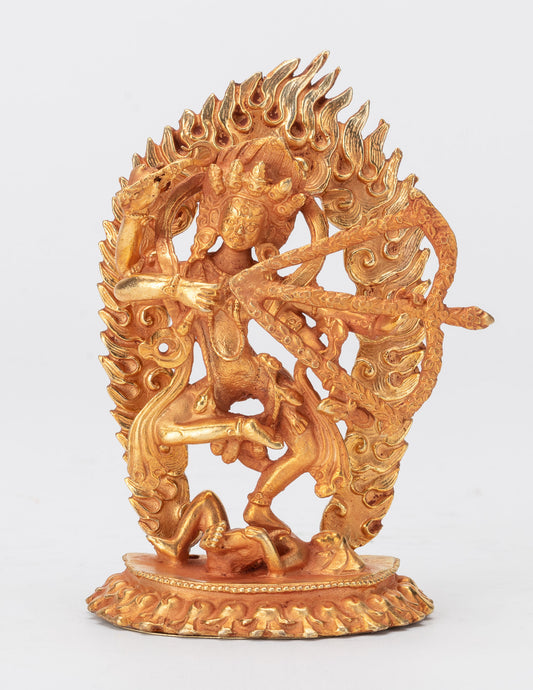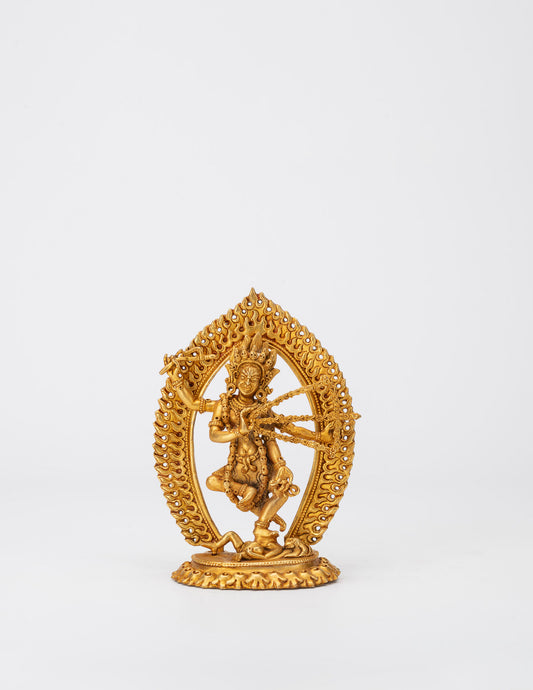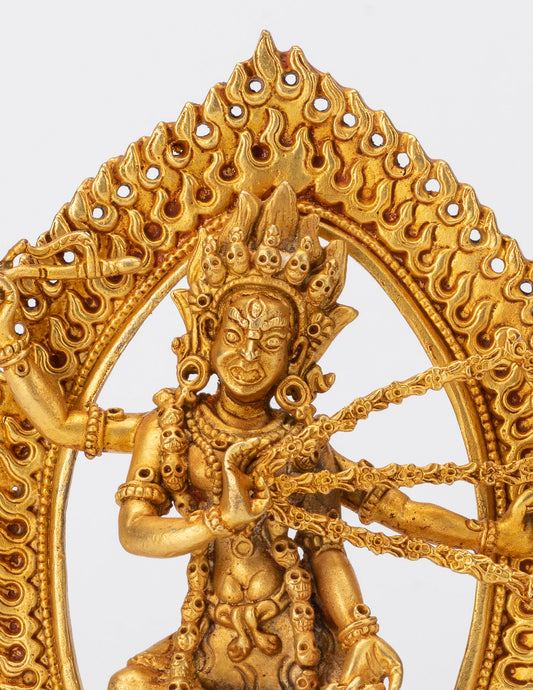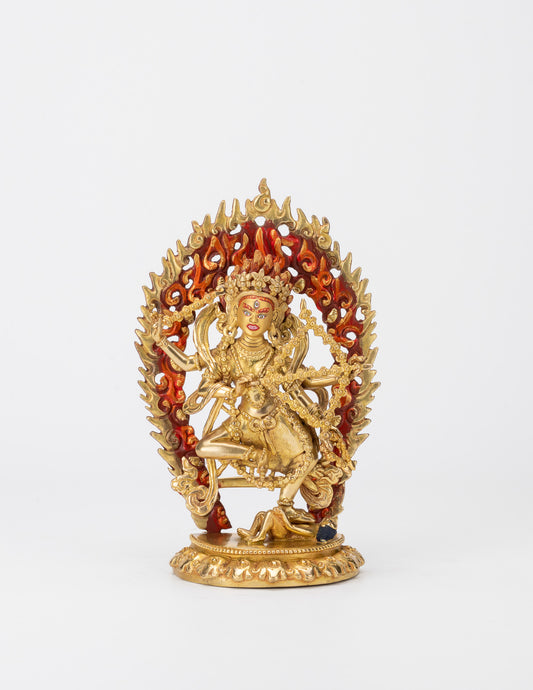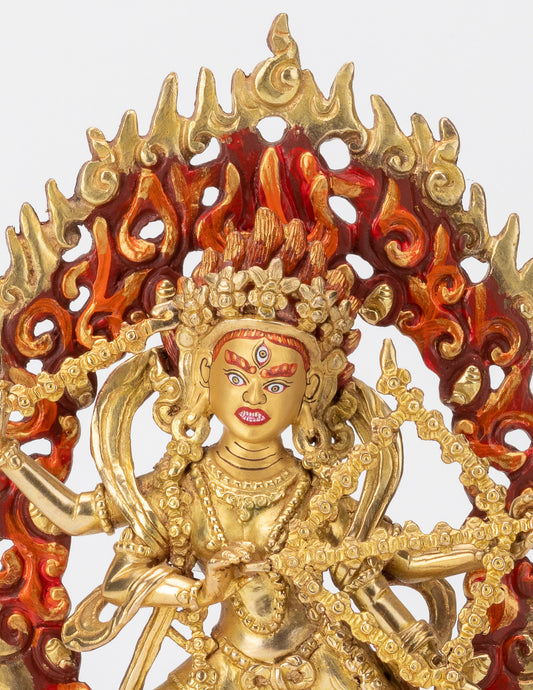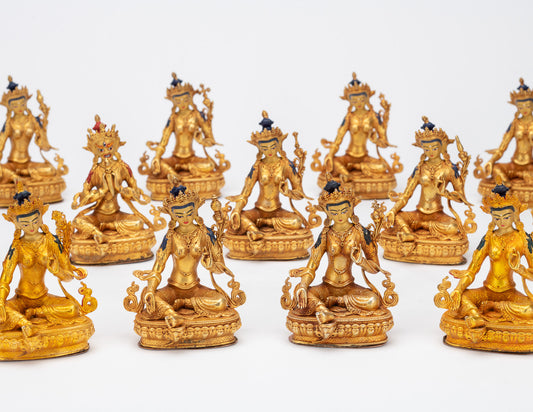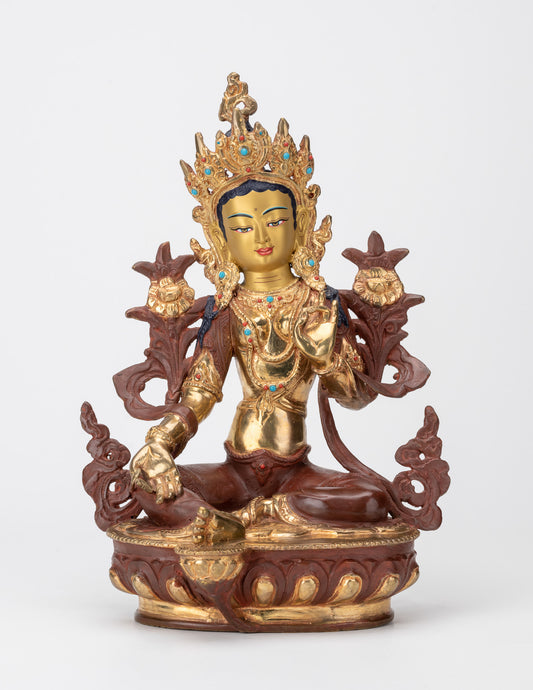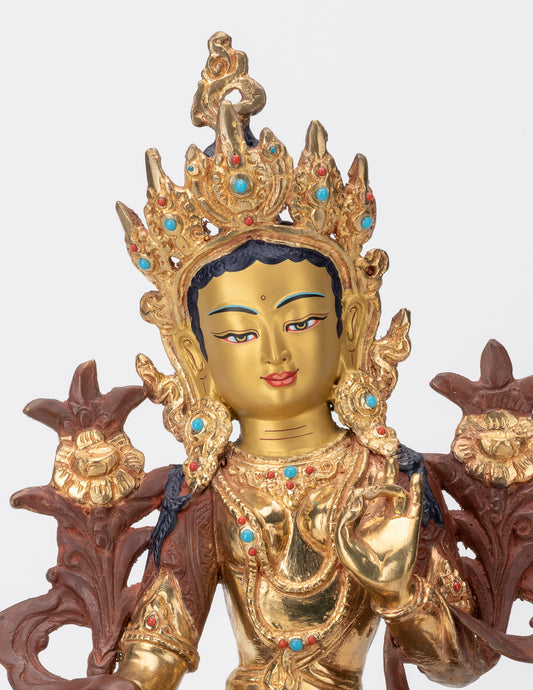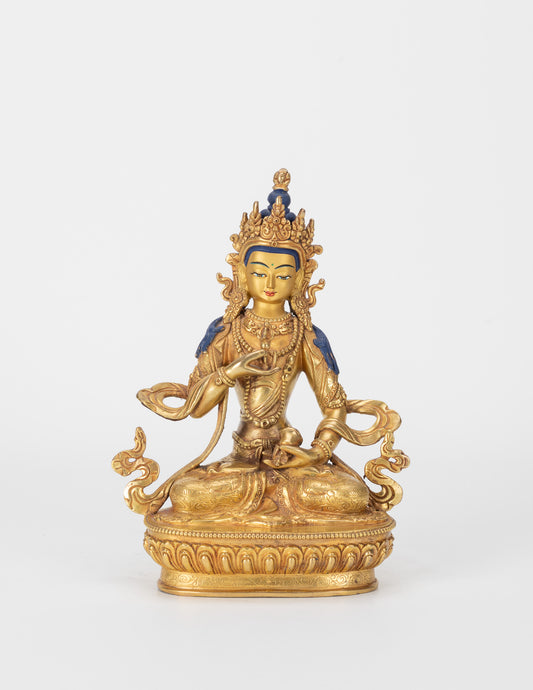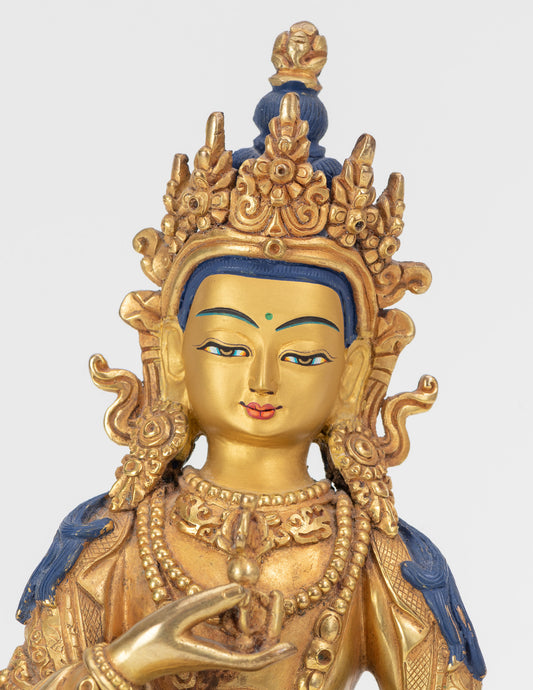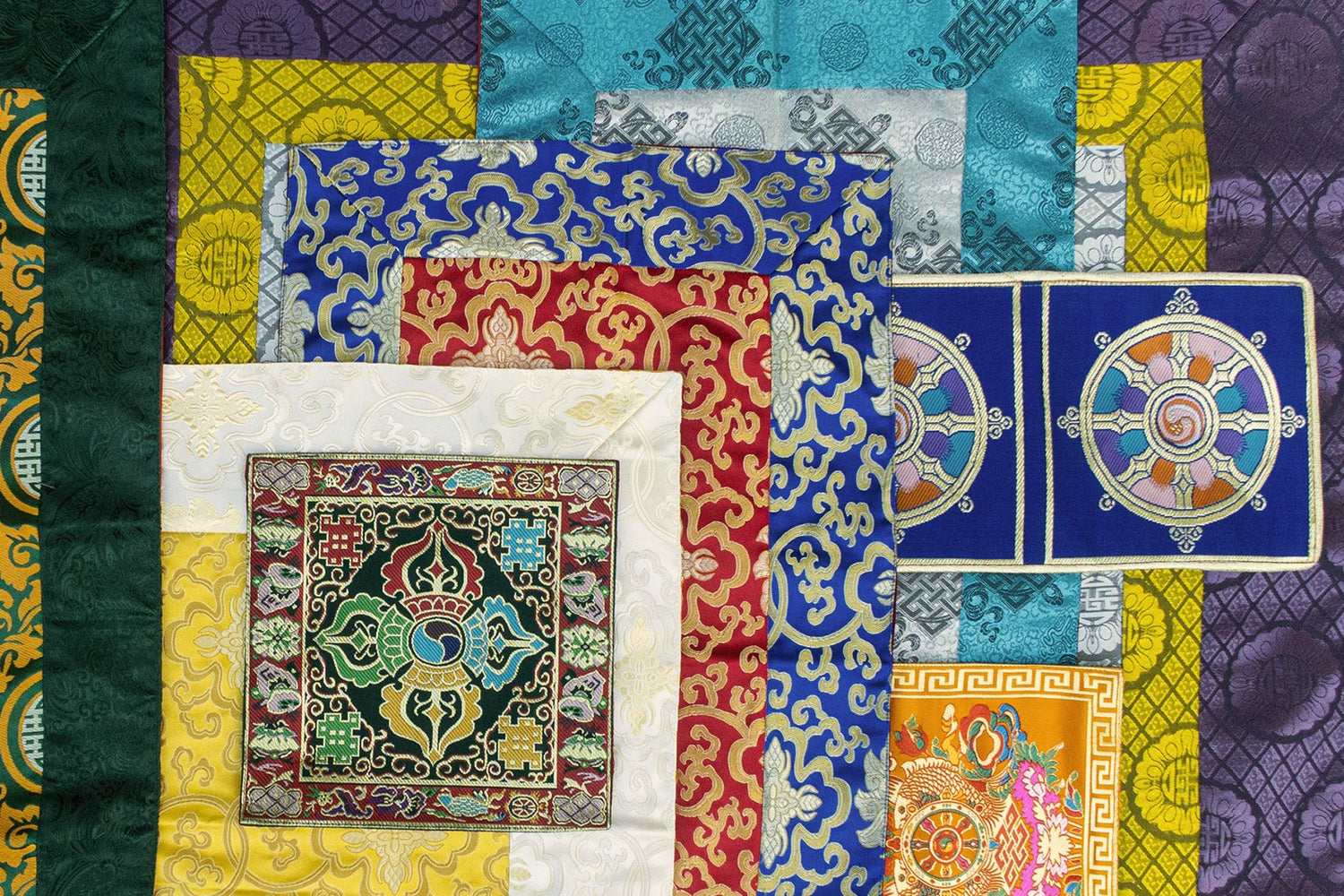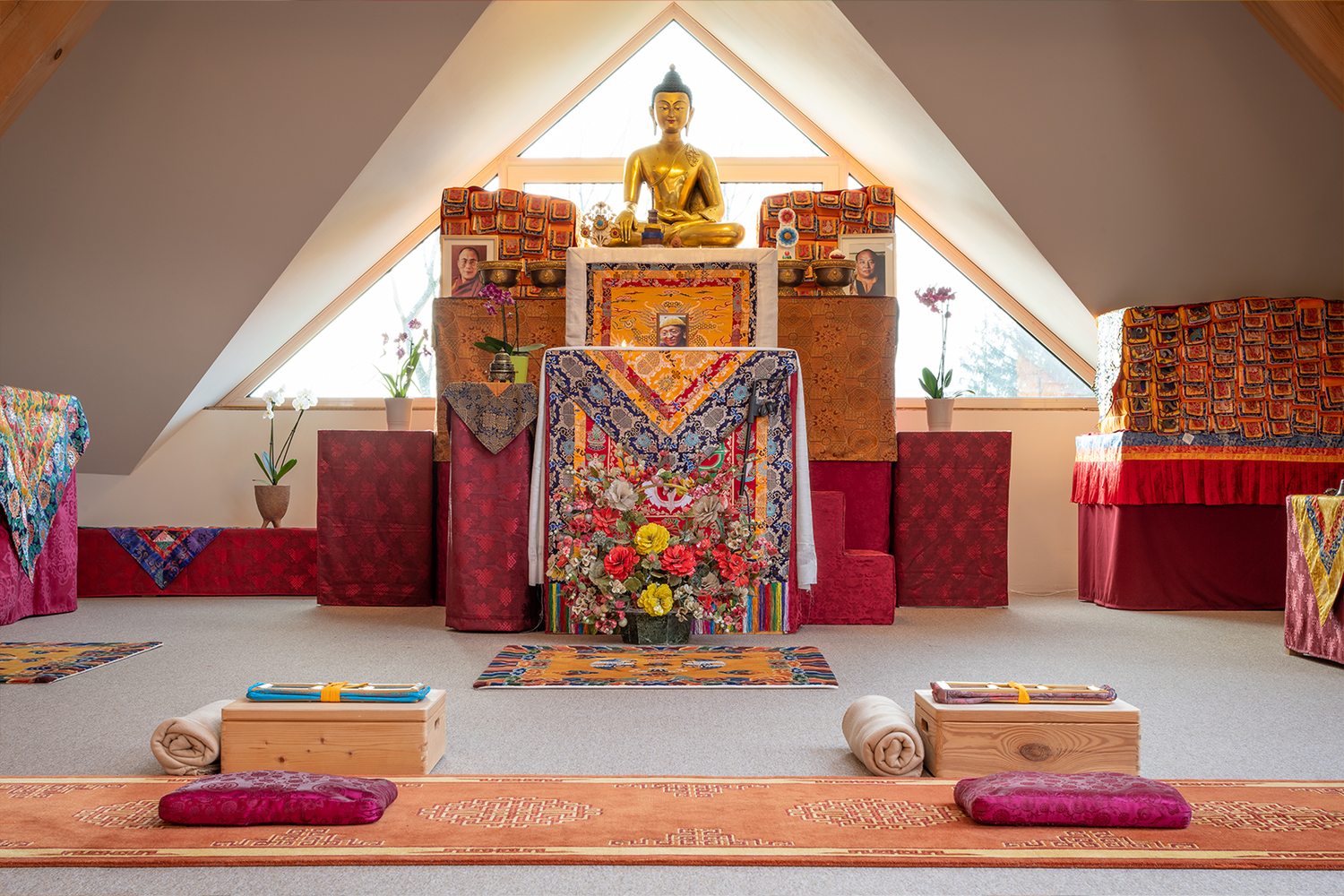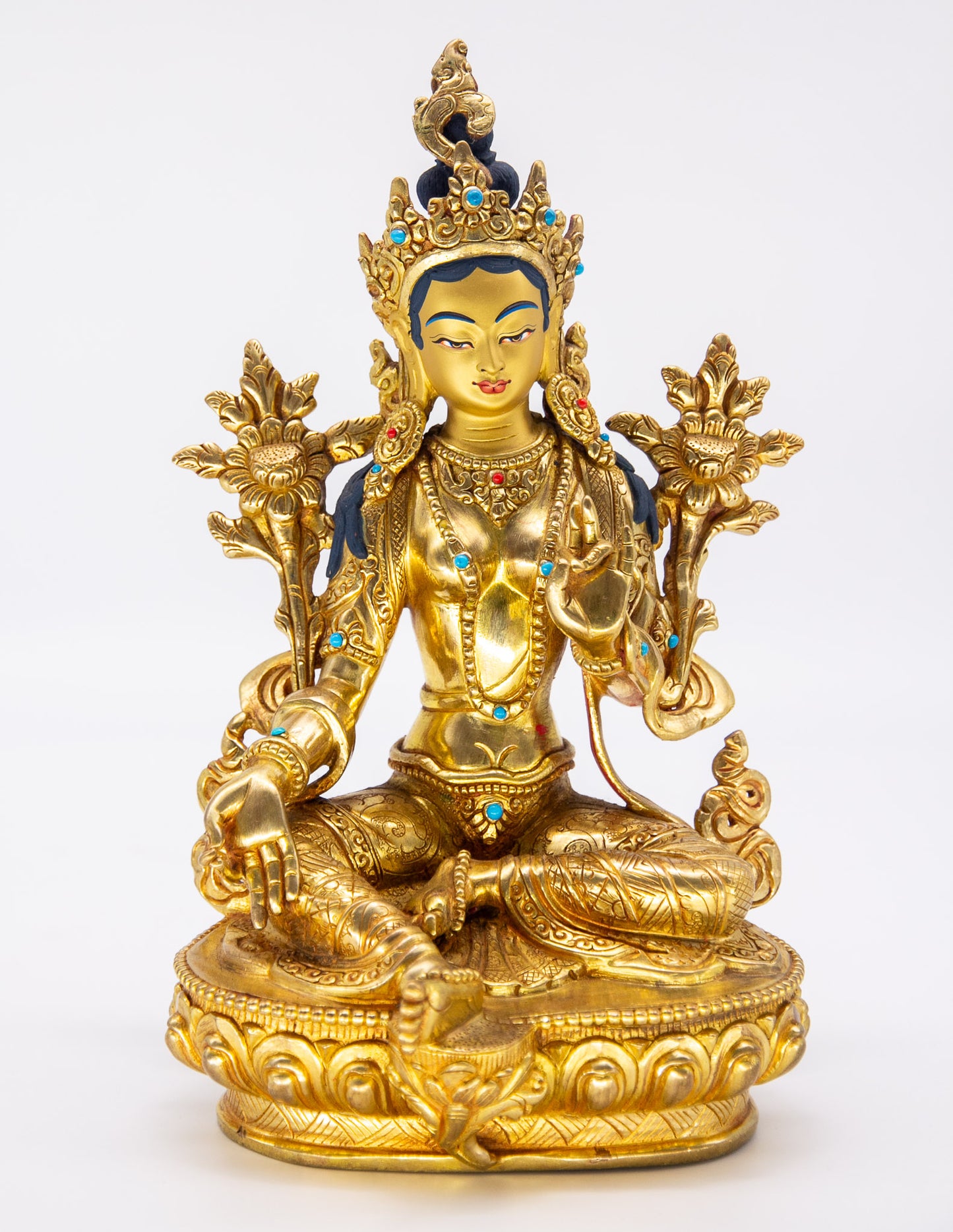
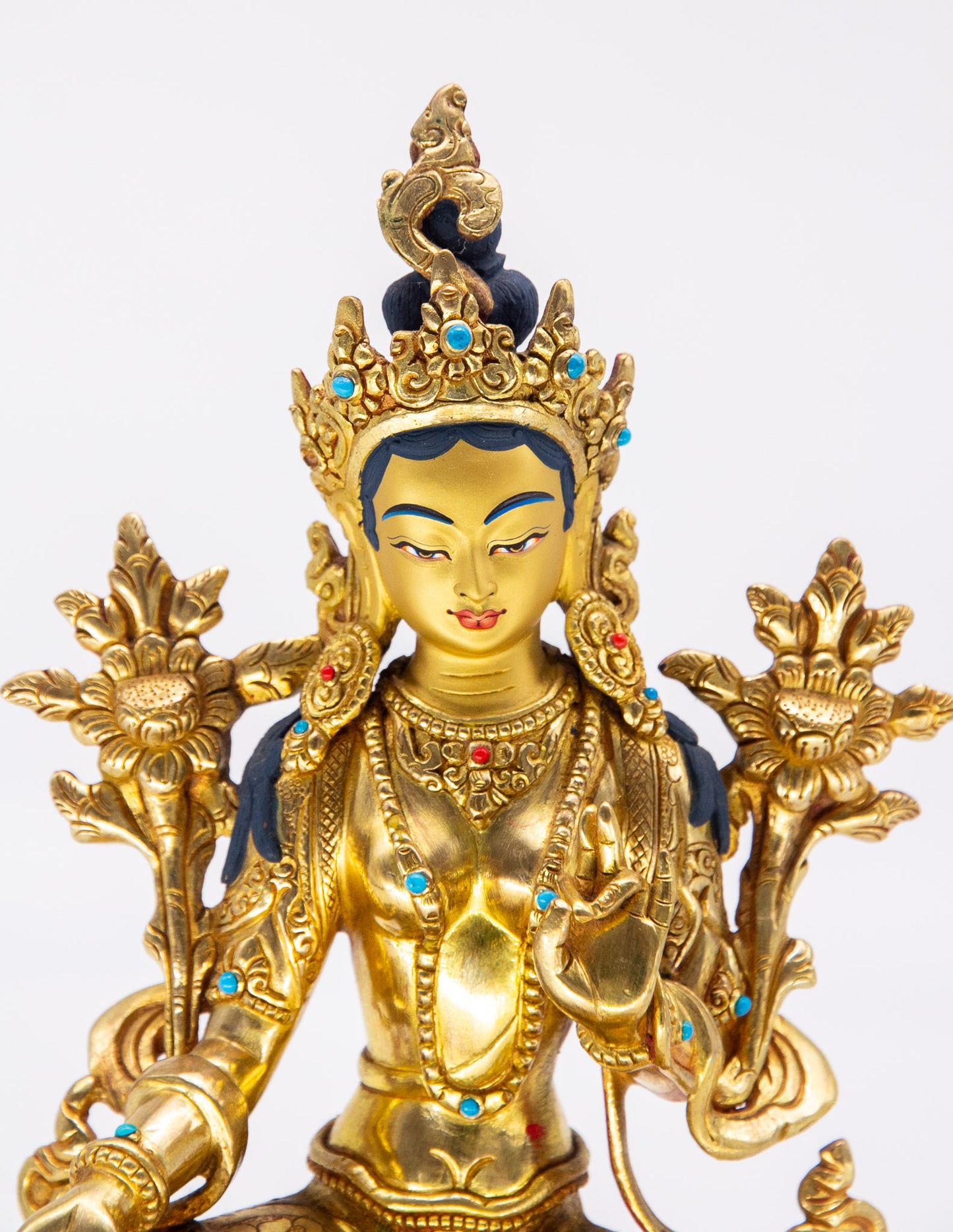
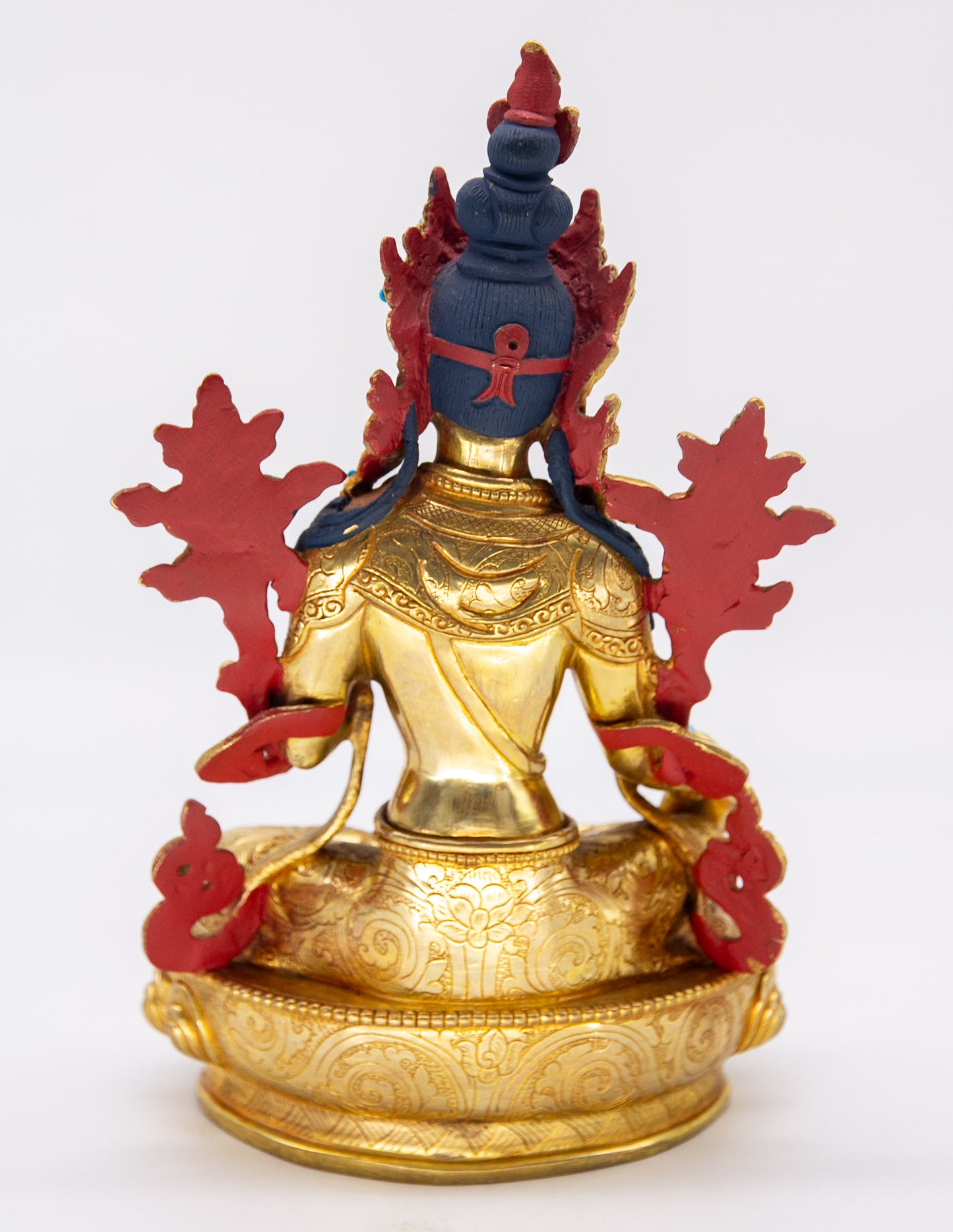
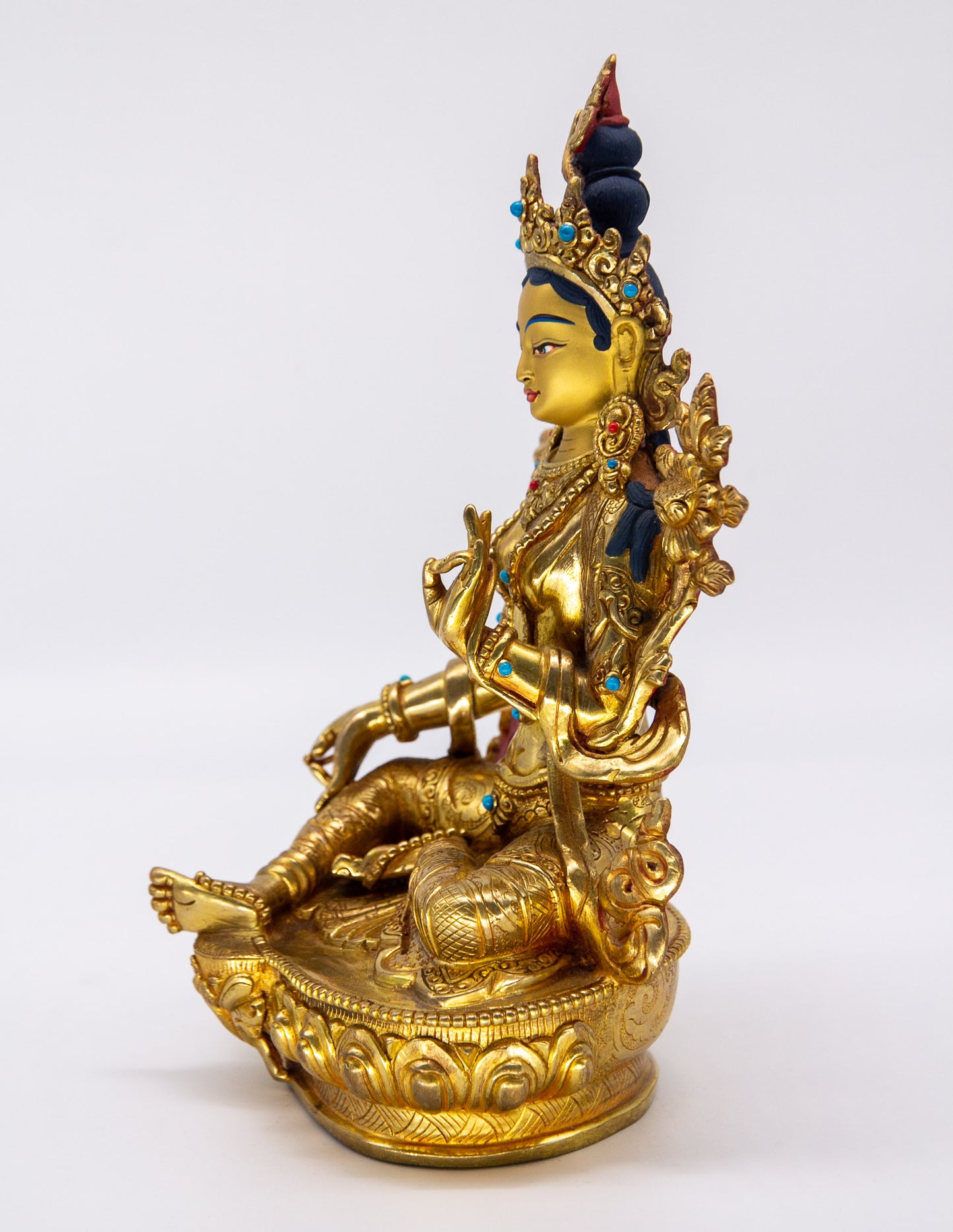
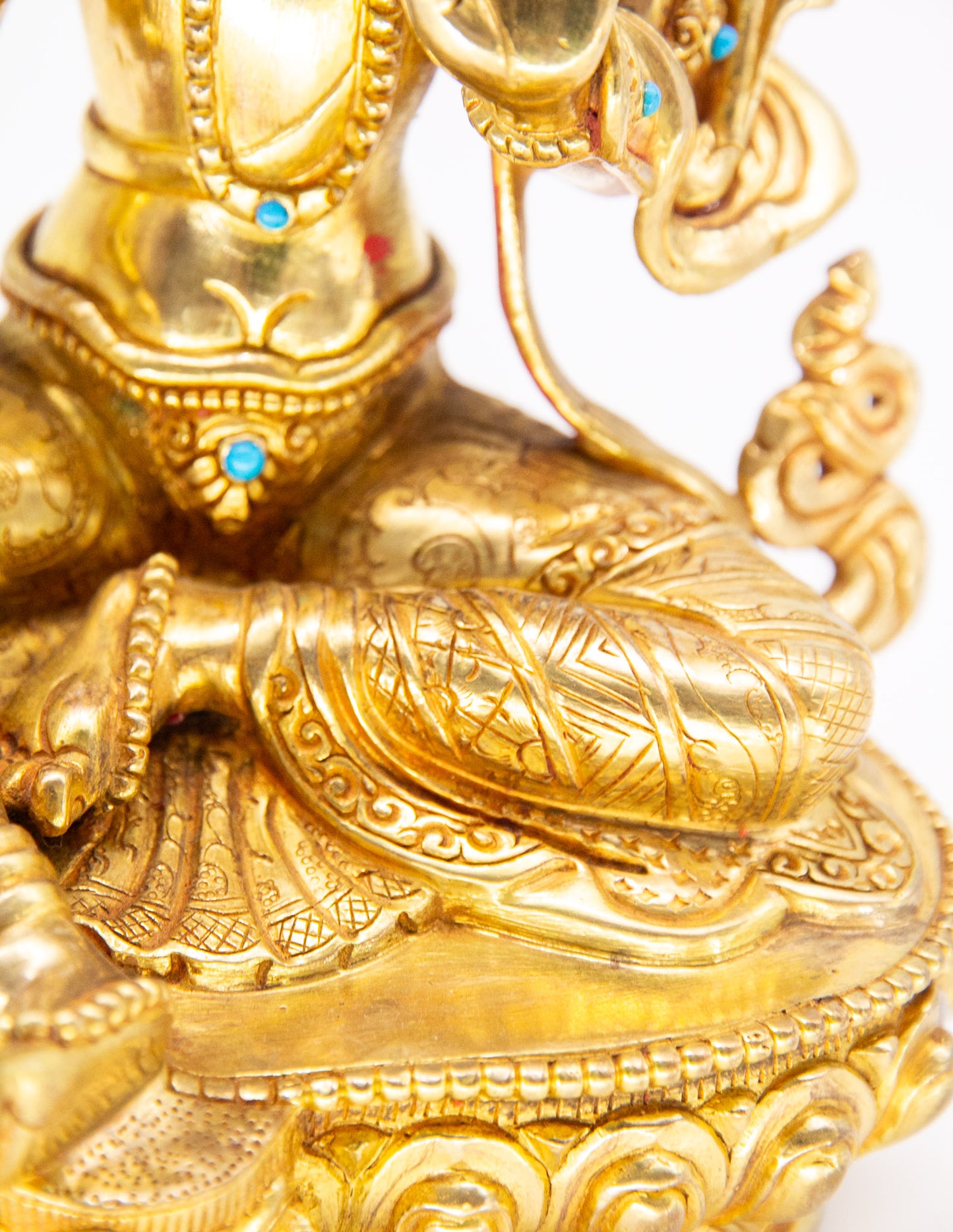
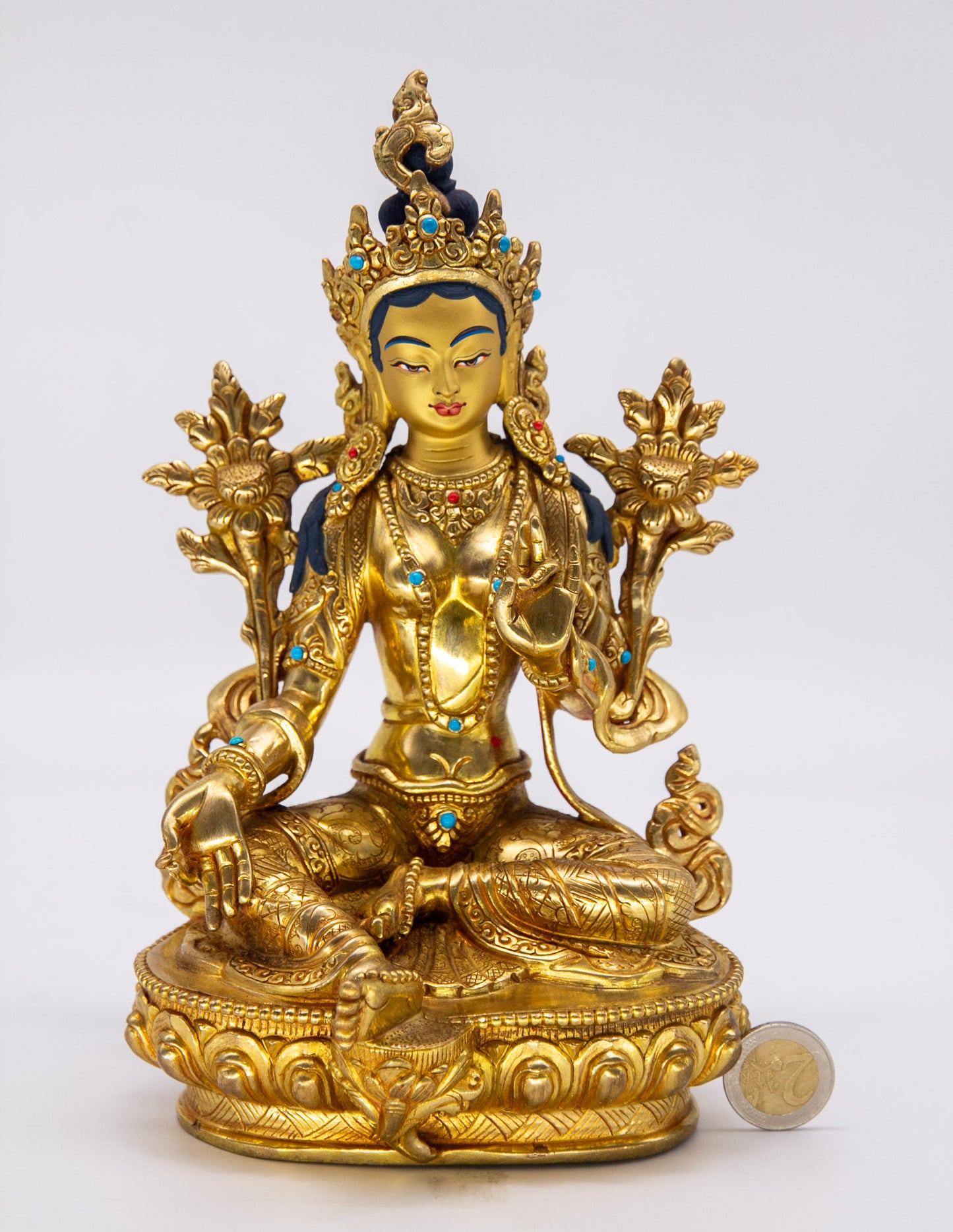
Deity Qualities at a Glance
| Amitabha | Amitabha, the Buddha of Boundless Light who belongs to the Lotus Family, symbolizes the limitless, luminous nature of enlightened mind. |
| Amitayus | Amitayus is revered as the Buddha of Infinite Life. In Vajrayana Buddhism, he is regarded as the sambhogakaya form of Amitabha, the Buddha of Infinite Light, who long ago created the buddhafield Sukhavati said to be the easiest pure land for devotees to take rebirth in. He holds in his lap a jeweled vase containing the magical elixir of longevity. |
| Chenrezig | Known as Avalokiteshvara in Sanskrit, Chenrezig is the ‘bodhisattva of infinite compassion’ and the most outstanding of all Tibetan Buddhist deities. White in colour and with four arms, he holds a wishfulfilling jewel at his heart, a rosary in his second right hand, and the stem of a lotus flower in his second left. His powerful mantra, the most popular recitation among Tibetan Buddhist practitioners, invokes the Lord of Infinite Compassion’s blessings to purify our misdeeds, increase our loving kindness and compassion, and bring us closer to enlightenment in the quickest, easiest way. Mantra: Om Ma Ni Pad Mé Hum |
| Dzambhala | Also known as ‘Jambhala’ or Lama Norlha, is the Lord of Wealth belonging to the Jewel Buddha Family, who grants material and spiritual abundance and prosperity. |
| Ekajati | Ekajati, the ‘One-plait Female’, is one of the three main protectors of the Nyingma School of Vajrayana. A ferocious emanation of Tara, her specialty is to guard the teachings and practices of Dzogchen, and to help dispel hindrances along the path to liberation. |
| Kurukulle | Kurukulle or Pema Khandro, a female deity of the Lotus family, is associated with the activity of magnetization or enchantment, to attract good fortune in order to help us remove obstacles. With a compassionate goal, her practice can have the virtuous aspect of creating auspicious conditions in support of important endeavours or simply to benefit your practice. |
| Guru Rinpoche | Guru Rinpoche, also known as Padmasambhava, is the Indian spiritual master who established Vajrayana Buddhism in 8th century Tibet. Embodying the union of wisdom and compassion, his sacred mantra invokes the blessings of liberation and enlightenment. Mantra: om ah hum vajra guru padma siddhi hum |
| Green Tara | Green Tara is the female deity that is one of the main figures in Tibet. Her sacred mantra invokes the liberating blessings of the female deity, who, with her maternal energy, hears the cries of sentient beings and swiftly rescues them all from peril. Tara is associated with enlightened activity and abundance. Mantra: om tare tuttare ture soha |
| Machik Labdron | Machik Labdron (1055-1153), the founder of the Chod 'Cutting' tradition of Tibetan Buddhism, is usually depicted with one-face, two-arms, and brilliant white. Her upraised right hand plays a damaru drum, while her left hand holds an upturned bell at her hip. |
| Manjushri | An extremely popular deity in the Mahayana Buddhist pantheon, Manjushri is profoundly revered by most Buddhists. He completely embodies prajna, ‘transcendent wisdom”’or divine knowledge. Manjushri sits upon a lotus and moon disk, raising his flaming sword of wisdom to cut through ignorance while clutching the stem of a lotus flower visible above his left shoulder. Upon the lotus is a volume of the Prajnaparamita Sutra. His powerful mantra is said to enhance wisdom and one’s powers of elocution. Mantra: oṃ arapacana dhīḥ |
| Medicine Buddha | Described as the primordial physician, or the Supreme Healer, the Medicine Buddha is the deity of compassion and healing who brings health and balance to our body and mind through the medicine of his enlightened wisdom. His unique mantra of supplication invokes his powerful healing blessings. Mantra: Tayata Om Bekandzé Bekandzé Maha Bekandzé Radza Samudgaté Soha |
| Mahakala | Mahakala is one of the foremost protector deities invoked in tantric Buddhism. Appearing as either black or deep blue, 2-armed, 4-armed, or 6-armed, he is the wrathful, powerful, enlightened emanation of Avalokistesvara, the Lord of Compassion. |
| Nagarjuna | Nagarjuna, a celebrated 3rd century Indian Buddhist master, founded the renowned Middle Way, or Madhyamaka, philosophical teachings central to all Tibetan Buddhist monastic and scholarly studies. Because he is said to have retrieved the precious Prajnaparamita sutras from the kingdom of the Nagas, he is always depicted with a nimbus of snakes protecting him. |
| Palden Lhamo | Palden Lhamo, ‘Glorious Goddess,” is a wrathful emanation of Goddess Saraswati and one of the Gelugpa School’s three main Dharma Protectors. In particular, she is the personal protector of all 14 incarnations of H.H. the Dalai Lama. |
| Prajnapharamita Devi | Prajnapharamita Devi, the ‘Goddess of Transcendental Wisdom’, is also known as the Great Mother Prajnaparamita, the mother of all the Enlightened Ones. She is the female embodiment of the perfection of wisdom and buddhahood, and is worshipped by all who seek enlightenment. |
| Sitatapatra | Sitatapatra, or Dug Karmo in Tibetan, means ‘White Parasol,’ and her special blessing is protection from disease, pandemics, supernatural threat, and natural disaster. Two-armed Sitatapatra manifests with an enchanting peaceful appearance, and reciting her mantra solicits her motherly powers of healing. However, in the face of obstacles, adversity, and menace, she is said to become a fierce, powerful, and utterly unshakable protector. |
| Shakyamuni | Buddha Shakyamuni is the most recognizable of all Buddhist icons. Having attained complete enlightenment 2500 years ago, his teachings, coalesced as Buddhism, have flourished worldwide. |
| Thousand-Armed Avalokiteshvara |
Avalokiteshvara (Chenrezig), who represents the compassion of all the buddhas, belongs to the Lotus Family headed by Buddha Amitabha. He is depicted with 1000 arms and 11 faces, and emanates boundless love. Each of his thousand palms, adored with an all-seeing eye that witnesses the suffering of beings, is in the gesture of supreme generosity. |
| Tröma Nagmo | Tröma Nagmo, which means Black Wrathful Woman, is the most wrathful aspect of Vajravarahi. She is the female embodiment of enlightened wisdom and also the main deity in Chod practice. |
| Tsuktor Namgyalma | Also known as Ushnisha Vijaya in Sanskrit, she is one of three main long life deities in Tibetan Buddhism, and is also one of the 21 Taras. She is white with three faces and eight arms, and holding a small buddha image in her upper right hand. |
| Samantabhadra | Also known as Kuntu Zangpo which means “Unchanging Goodness”, is the Primordial Buddha in the Nyingma tradition. His nakedness represents the unadorned, primordially pure absolute nature of our mind. |
| Yeshe Tsogyal | Yeshe Tsogyal was the consort of Guru Rinpoche, and often depicted seated beside him in thangkas. In particular, she is regarded as completely enlightened and credited with both transcribing and hiding Padmasambhava’s teachings as terma or ‘hidden treasures.’ |
| White Tara | Also known as the ‘Savioress with Seven Eyes’, is an elegant long life deity who embodies enlightened wisdom, compassion, and serenity. She is known for bestowing healing blessings. |
| Vajra Yogini |
Vajra Yogini is one of the foremost female Yidam deities among the pantheon of tantric Buddhism. Her tantric practices are kept secret, only for the initiated. Traditionally, she is depicted as an enchanting dakini of 16 years, one-face, 2-armed, flaming red in color, naked, and clutching the curved ritual blade and kapala. |
| Vajradhara |
Vajradhara, the “Vajra-holder,” is the Dharmakaya Buddha in the Sarma (new) Schools of Tibetan Buddhism. and is often regarded as the originator of those schools. |
| Vajrakilaya | Vajrakilaya, or Dorje Phurba, is the extremely wrathful form of Vajrasattva. He is a completely enlightened 3-faced Yidam deity, or Heruka, whose chief attribute is a dagger or (Tib) phurba. Said to embody the enlightened activity of all the buddhas, he is most powerful at dispelling obstacles along the path to liberation, |
| Vajrasattva | Also known as Dorje Sempa, is the esoteric Sambhogakaya form of Samantabhadra, and is the central figure in all Tibetan Buddhist tantric purification practices. |
| Vajrapani |
Vajrapani, who embodies the power and strength of enlightened energy, brandishes a diamond scepter or vajra symbolizing the thunderbolt of awakened wisdom. He is worshiped as a Dharmapala protector. |
